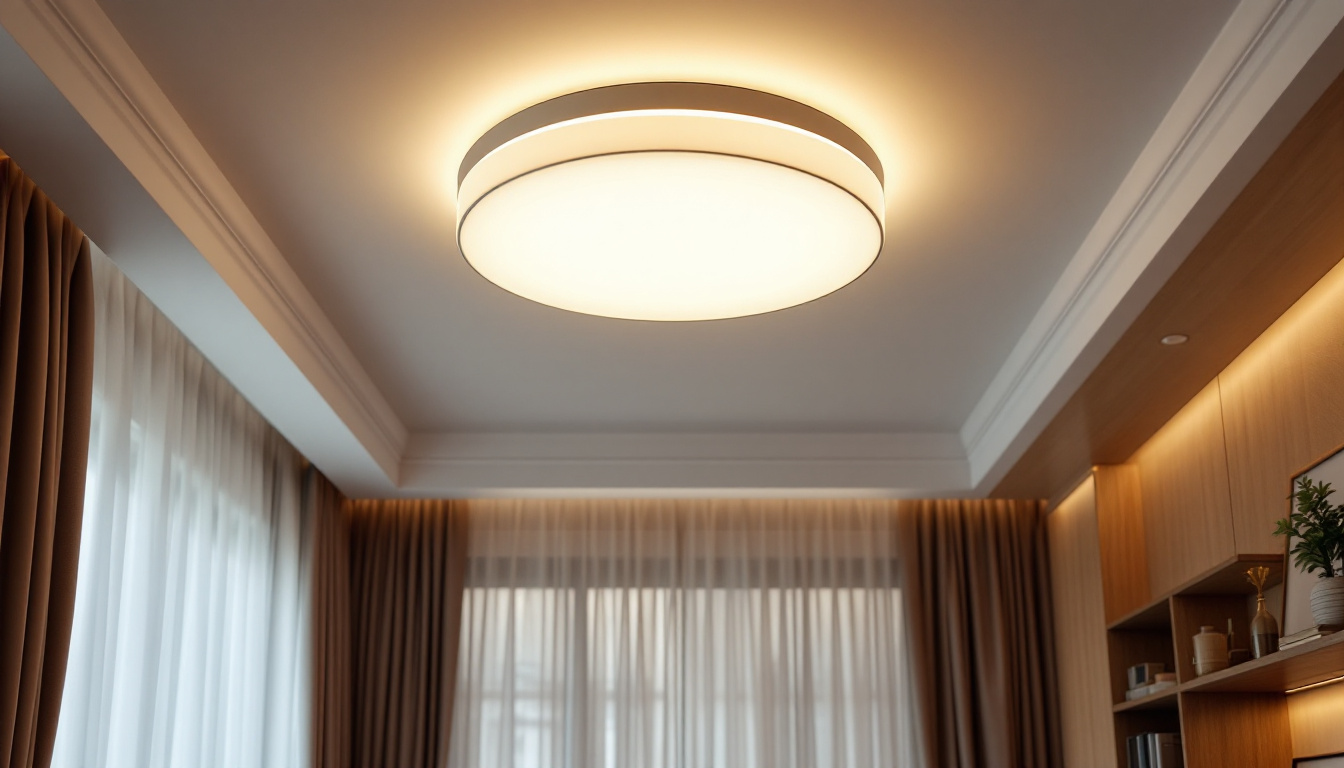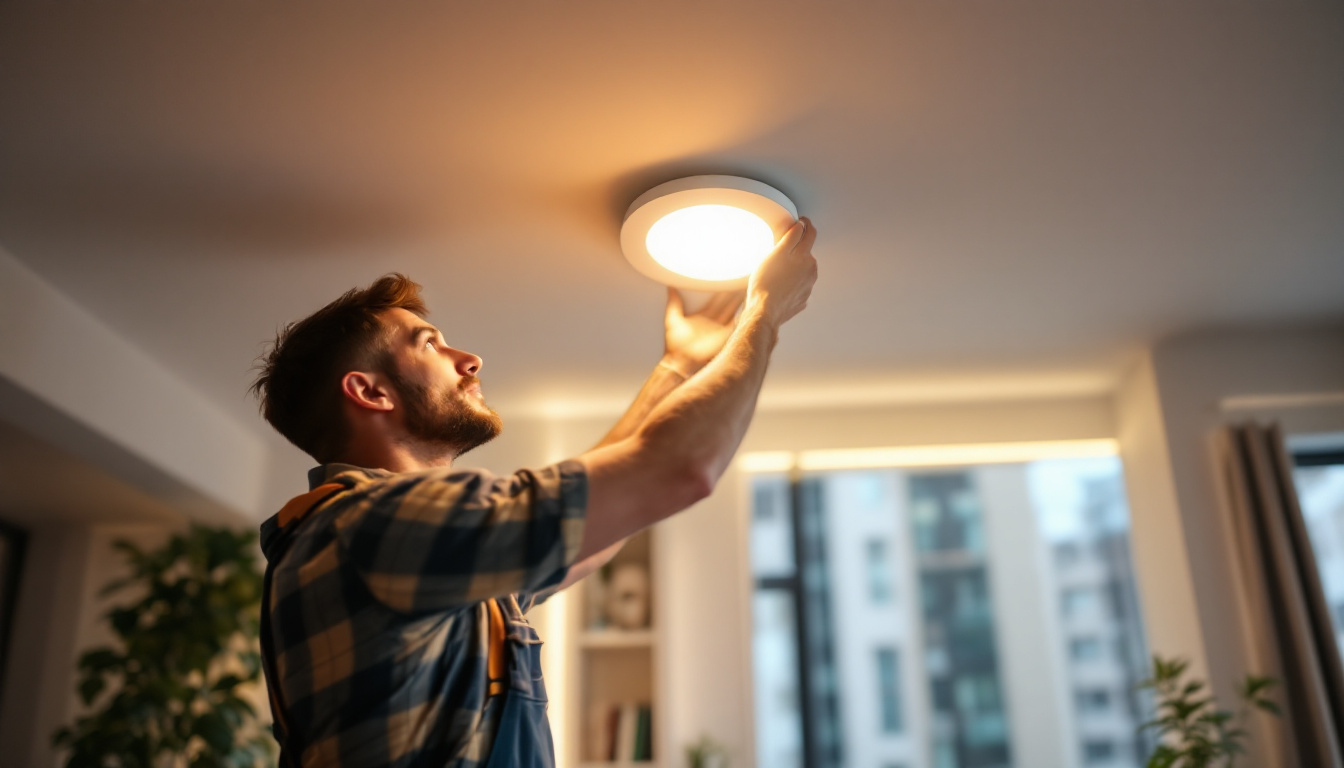
Ceiling light fixtures play a crucial role in both residential and commercial spaces. They not only illuminate an area but also enhance the overall aesthetic appeal of a room. For lighting contractors, understanding the nuances of ceiling light fixtures is essential to delivering quality results to clients. A well-chosen fixture can transform a dull space into a vibrant environment, while a poorly selected one can lead to dissatisfaction and costly reworks.
Moreover, the right ceiling light fixture can significantly affect energy efficiency. With advancements in technology, options such as LED fixtures offer both longevity and reduced energy consumption. This is a critical consideration for contractors aiming to provide sustainable solutions to their clients. Additionally, the integration of smart lighting systems allows for customizable lighting experiences, enabling users to adjust brightness and color temperature according to their preferences and activities, further enhancing the functionality of the space.
There are various types of ceiling light fixtures available, each designed to serve specific purposes. Understanding these types can help contractors make informed decisions that align with the client’s needs.
In addition to these common types, there are also track lighting systems that offer flexibility in directing light where it is most needed. These systems can be adjusted to highlight artwork or architectural features, making them a popular choice for galleries and retail spaces. Additionally, recessed lighting has gained popularity for its clean, unobtrusive look, providing a sleek solution for modern interiors while ensuring that the focus remains on the room’s decor.
When it comes to selecting ceiling light fixtures, several common mistakes can lead to dissatisfaction and increased costs. Being aware of these pitfalls can help contractors avoid costly errors in their projects.
One of the most frequent mistakes is choosing a fixture that is either too large or too small for the space. A fixture that overwhelms a room can make it feel cramped, while one that is too small may not provide adequate lighting. It is essential to measure the space and consider the proportions of the room when selecting a fixture.
For instance, in a large dining area, a small pendant light may not provide sufficient illumination, while a massive chandelier in a compact kitchen can create an awkward visual imbalance. A good rule of thumb is to add the dimensions of the room in feet and convert that number into inches to determine an appropriate diameter for the fixture.
Each room serves a different function, and the lighting should reflect that. A common mistake is using the same type of fixture throughout a home without considering the specific needs of each room. For example, bright task lighting is essential in a kitchen, while softer, ambient lighting may be more appropriate for a bedroom.
Understanding the purpose of the space allows contractors to recommend fixtures that enhance functionality while also fitting the desired aesthetic. This tailored approach not only satisfies clients but also showcases the contractor’s expertise.
The style and finish of ceiling light fixtures can significantly impact the overall design of a space. Selecting the wrong style can clash with the existing decor, leading to a disjointed look.
When selecting fixtures, it is vital to consider the overall decor of the room. A modern fixture may look out of place in a traditionally styled home, while a vintage fixture might not suit a contemporary space. Contractors should encourage clients to think about the overall theme and color palette of the room when making selections.
Additionally, coordinating finishes is essential. A mix of metals can be visually appealing, but it is important to maintain some consistency to avoid a chaotic appearance. For example, if a kitchen features stainless steel appliances, a brushed nickel or chrome fixture would complement the space well.
The color temperature of light can dramatically affect the mood of a room. Warm white light (around 2700K) creates a cozy atmosphere, making it suitable for living rooms and bedrooms. On the other hand, cool white light (around 4000K) is ideal for workspaces, as it promotes alertness and focus.
Contractors should educate clients about the importance of color temperature in their lighting choices. By selecting fixtures with the appropriate color temperature, contractors can help create the desired ambiance in each space.
With an increasing focus on sustainability, energy efficiency has become a paramount consideration in lighting projects. Choosing energy-efficient fixtures not only benefits the environment but also reduces long-term costs for clients.
When selecting ceiling light fixtures, it is crucial to consider their energy ratings. LED fixtures, for example, are known for their low energy consumption and long lifespan. Contractors should be familiar with the various energy ratings and certifications, such as ENERGY STAR, to guide clients toward the most efficient options.
Additionally, educating clients about the benefits of energy-efficient lighting can enhance their satisfaction with the project. Many clients appreciate the long-term savings on their energy bills, making it an attractive selling point.
Smart lighting solutions have gained popularity in recent years, offering convenience and energy savings. These systems allow users to control their lighting remotely, set schedules, and adjust brightness levels. Contractors should consider recommending smart fixtures or compatible bulbs to clients who are interested in modern technology.
Integrating smart lighting into a project can also enhance its appeal. Clients are often willing to invest in technology that simplifies their lives and adds value to their homes. By staying informed about the latest trends in smart lighting, contractors can position themselves as knowledgeable professionals in the field.
Proper installation is critical to the performance and longevity of ceiling light fixtures. Mistakes during installation can lead to safety hazards and costly repairs. Contractors must pay close attention to various installation factors to ensure a successful project.
Before installation, it is essential to assess the electrical requirements of the chosen fixtures. Some fixtures may require specific wattages or types of bulbs, and failing to meet these requirements can lead to malfunction or safety issues. Contractors should verify that the existing wiring and electrical systems are compatible with the new fixtures.
Additionally, understanding local building codes and regulations is crucial. Ensuring compliance not only guarantees safety but also protects contractors from potential legal issues down the line.
Ceiling light fixtures must be securely mounted to prevent accidents and damage. Contractors should ensure that the mounting hardware is appropriate for the weight and type of fixture being installed. For heavier fixtures, additional support may be necessary to ensure stability.
Proper installation techniques, such as using the correct anchors and screws, are vital for the longevity of the fixture. Taking the time to install fixtures correctly can save contractors from future service calls and enhance their reputation for quality work.
Once the installation is complete, the relationship between the contractor and the client does not end. A post-installation follow-up can significantly enhance client satisfaction and lead to future referrals.
Contractors should provide clients with maintenance tips to help them care for their new fixtures. This can include advice on cleaning, bulb replacement, and troubleshooting common issues. Educating clients on how to maintain their fixtures can prolong their lifespan and ensure optimal performance.
Additionally, offering a warranty or service plan can provide clients with peace of mind. Knowing that they have support in case of issues can enhance their overall experience and foster trust in the contractor’s expertise.
Feedback is invaluable for contractors looking to improve their services. After the project is complete, reaching out to clients for their thoughts can provide insights into their satisfaction levels and highlight areas for improvement. This not only helps in refining future projects but also demonstrates a commitment to client satisfaction.
Ceiling light fixtures are a vital component of any lighting project, and avoiding common mistakes can save contractors time, money, and enhance client satisfaction. By understanding the various types of fixtures, considering the specific needs of each space, and focusing on energy efficiency, contractors can deliver exceptional results.
Moreover, ensuring proper installation and maintaining communication with clients post-installation can significantly impact the success of a project. By following these guidelines, lighting contractors can establish themselves as trusted professionals in the field, paving the way for future opportunities and growth.
Ready to elevate your lighting projects and avoid those costly mistakes? Choose LumenWholesale for an unbeatable combination of quality, affordability, and convenience. Our spec-grade lighting products meet the highest industry standards, ensuring you deliver exceptional results every time. Say goodbye to inflated markups and hello to hassle-free bulk buying with free shipping. Don’t compromise on your lighting needs. Wholesale Lighting at the Best Value is just a click away. Partner with LumenWholesale today and light up your projects with confidence.

Explore the pros and cons of portable LED lights compared to traditional lighting options.

Explore expert insights and best practices for using vintage LED bulbs in modern settings.

Discover innovative hacks for smart lighting contractors to optimize recessed downlight fixtures.

Discover the essential insights lighting contractors need to meet client expectations in warehouse projects.